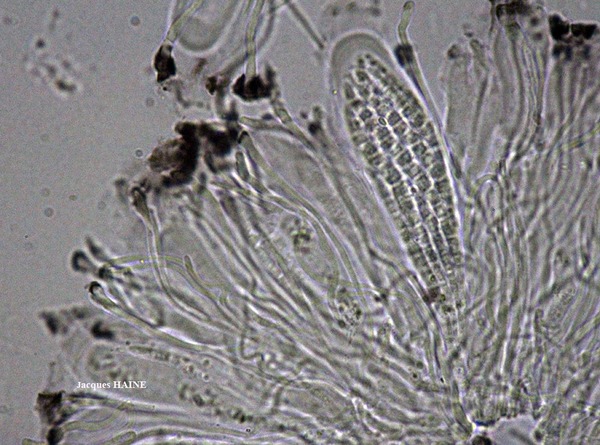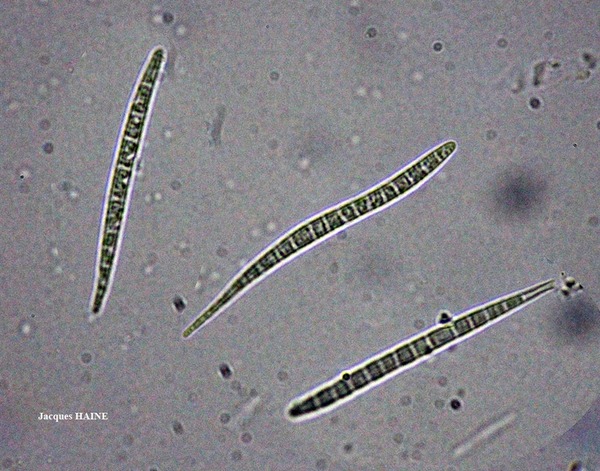Bacidia biatorina (Körb.) Vain.
Acta Soc. Fauna Fl. Fenn., 53, 1: 178, 1922. Basionym: Raphiospora atrosanguinea var. biatorina Körb. - Parerga Lichenol.: 238, 1861.
Synonyms: Bacidia acerina auct. non (Ach.) Arnold
Distribution: C - Sar (Rizzi & al. 2011, Di Nuzzo & al. 2022).
Description: Thallus crustose, episubstratic, pale green, grey-green or yellow-green, sometimes brown-spotted, granular, the granules 50-120 µm wide, sometimes isidioid, often browned in upper part. Apothecia lecideine, orange-brown to dark purplish brown, sometimes almost black, rounded, sessile and constricted at base, (0.5-)0.7-1.5 mm across, with a flat disc and a thick, smooth, raised, finally sometimes excluded proper margin. Proper exciple orange-brown to dark red-brown in outer part, paler within, the pigmented parts K+ purple; epithecium brown to orange-brown, K+ purple; hymenium colourless, 80-90 µm high; paraphyses 0.8-1.6 µm thick at mid-level, the apical cells up to 4 µm wide, without internal pigment; hypothecium colourless to very pale yellow. Asci 8-spored, clavate to cylindrical-clavate, the apical dome K/I+ dark blue with a pale, conical-pointed apical cushion (axial mass), the wall I-, but the thin outer gel I+ blue, Bacidia-type. Ascospores 9-16(-22)-septate, hyaline, needle-like, twisted in the asci, (45-)60-75(-85) x 2.5-3(-4) µm. Pycnidia rare, pale orange. Conidia thread-like, curved, 9-16 x c- 0.5 µm. Photobiont chlorococcoid. Spot tests: thallus K-, C-, KC-, P-, UV-. Chemistry: thallus without lichen substances; Laurocerasi-brown pigment in epithecium, proper exciple, and pycnidial wall. Rubella-orange pigment in epi- and hypothecium, proper exciple, and pycnidial wall.Note: a rare, oceanic species growing on trunks of mature deciduous trees (often oaks) in old woodlands, mostly in Lobarion-communities. It is included in the Italian red list of epiphytic lichens as “Data Deficient” (Nascimbene & al. 2013c).
Growth form: Crustose
Substrata: bark
Photobiont: green algae other than Trentepohlia
Reproductive strategy: mainly sexual
Restricted to humid-warm, oceanic areas
Commonnes-rarity: (info)
Alpine belt: absent
Subalpine belt: absent
Oromediterranean belt: absent
Montane belt: absent
Submediterranean belt: absent
Padanian area: absent
Humid submediterranean belt: extremely rare
Humid mediterranean belt: extremely rare
Dry mediterranean belt: absent
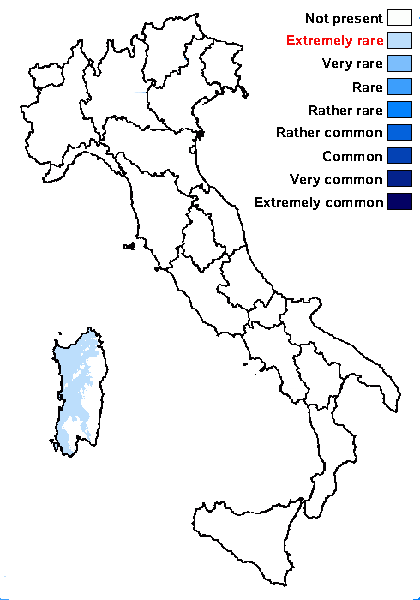
Predictive model
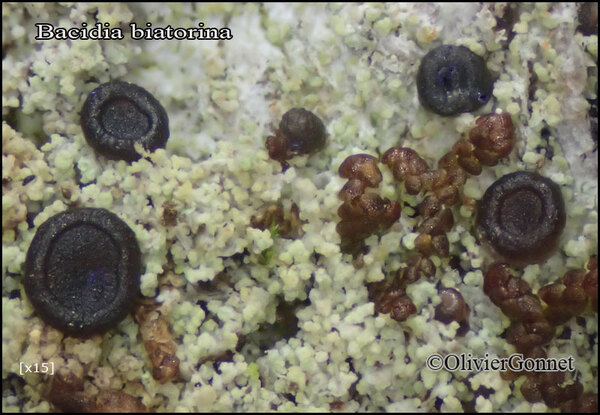
Courtesy: Olivier et Danièle Gonnet - Source: https://www.afl-lichenologie.fr/Photos_AFL/Photos_AFL_B/Textes_B2/Bacidia_biatorina.htm
France, Forêt des Touches, alt. 1100 m, sur roche calcaire, Villard-de-Lans - Isère
26/3/2018
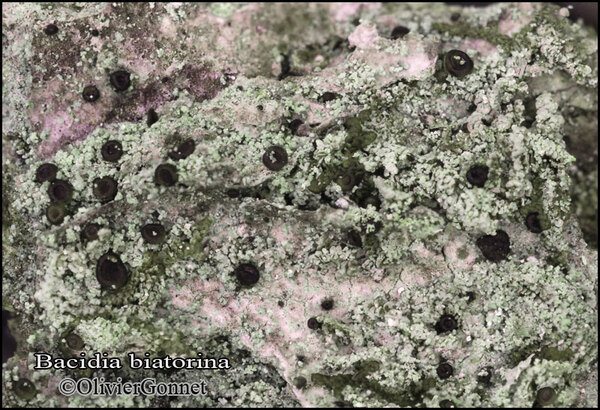
Courtesy: Olivier et Danièle Gonnet - Source: https://www.afl-lichenologie.fr/Photos_AFL/Photos_AFL_B/Textes_B2/Bacidia_biatorina.htm
France, Forêt des Touches, alt. 1100 m, sur roche calcaire, Villard-de-Lans - Isère
26/3/2018
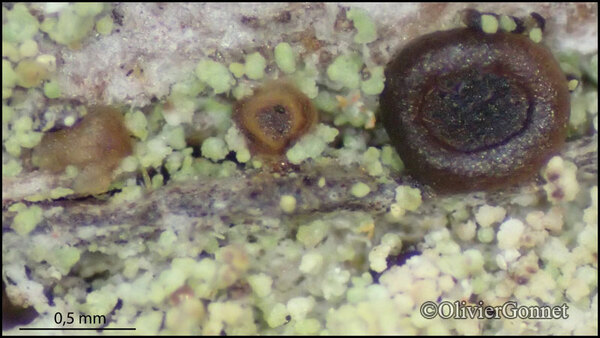
Courtesy: Olivier et Danièle Gonnet - Source: https://www.afl-lichenologie.fr/Photos_AFL/Photos_AFL_B/Textes_B2/Bacidia_biatorina.htm
France, Forêt des Touches, alt. 1100 m, sur roche calcaire, Villard-de-Lans - Isère
26/3/2018
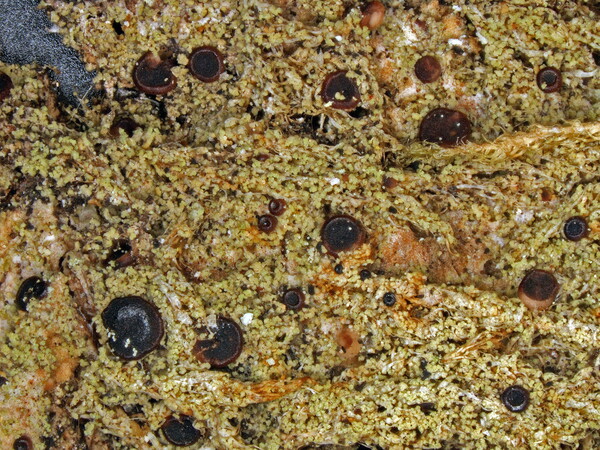
Andres Saag - CC BY-SA NC ND
Herbarium: Holotype
Source:http://fungi.myspecies.info/all-fungi/fellhanera-viridisorediata
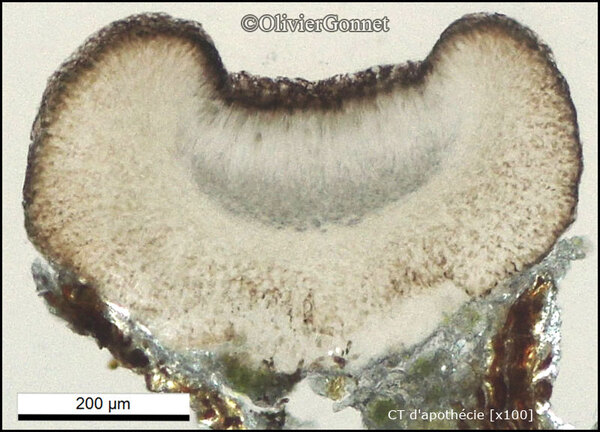
Courtesy: Olivier et Danièle Gonnet - Source: https://www.afl-lichenologie.fr/Photos_AFL/Photos_AFL_B/Textes_B2/Bacidia_biatorina.htm
France, Forêt des Touches, alt. 1100 m, sur roche calcaire, Villard-de-Lans - Isère
26/3/2018
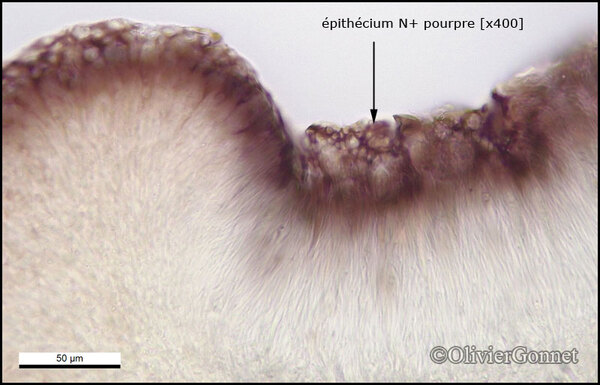
Courtesy: Olivier et Danièle Gonnet - Source: https://www.afl-lichenologie.fr/Photos_AFL/Photos_AFL_B/Textes_B2/Bacidia_biatorina.htm
France, Forêt des Touches, alt. 1100 m, sur roche calcaire, Villard-de-Lans - Isère
26/3/2018
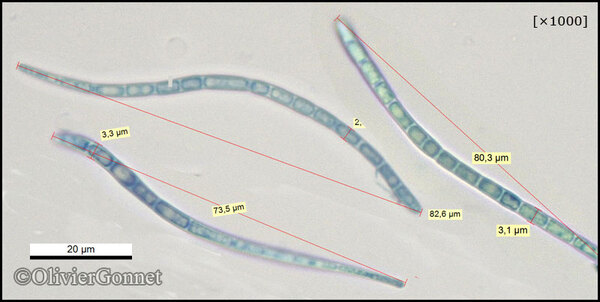
Courtesy: Olivier et Danièle Gonnet - Source: https://www.afl-lichenologie.fr/Photos_AFL/Photos_AFL_B/Textes_B2/Bacidia_biatorina.htm
France, Forêt des Touches, alt. 1100 m, sur roche calcaire, Villard-de-Lans - Isère
26/3/2018
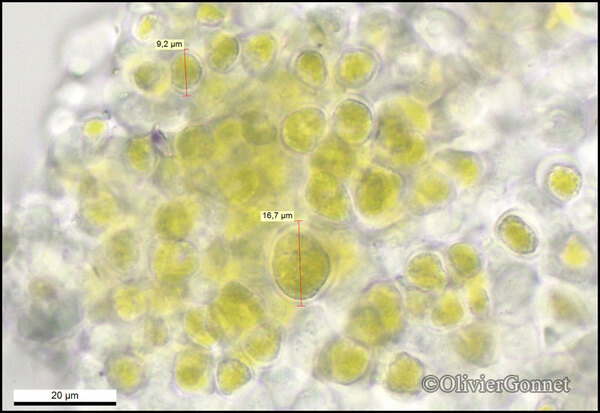
Courtesy: Olivier et Danièle Gonnet - Source: https://www.afl-lichenologie.fr/Photos_AFL/Photos_AFL_B/Textes_B2/Bacidia_biatorina.htm
France, Forêt des Touches, alt. 1100 m, sur roche calcaire, Villard-de-Lans - Isère
26/3/2018
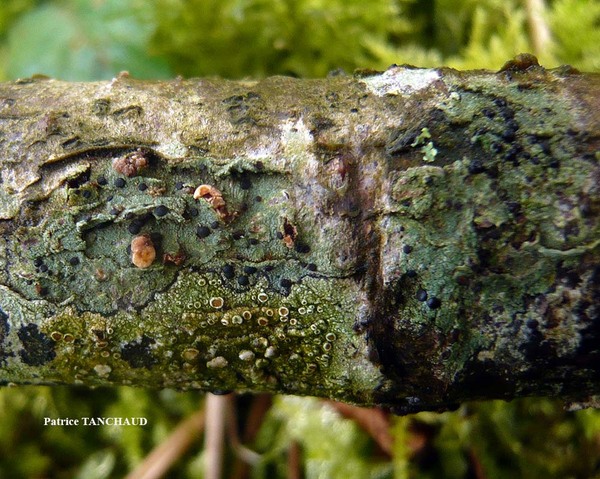
Patrice Tanchaud - Source: http://www.lichensmaritimes.org/index.php?task=fiche&lichen=679&lang=en
France, Vendée
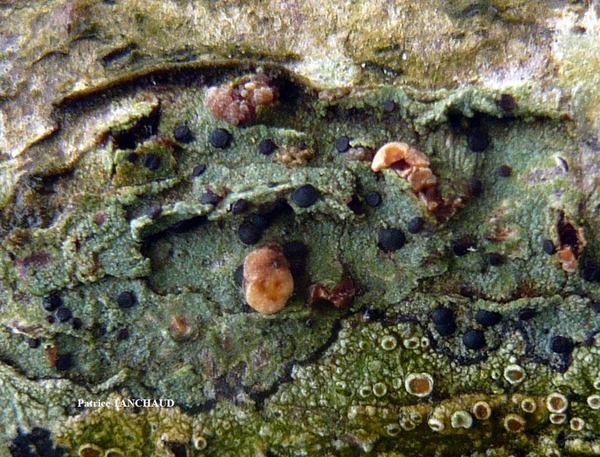
Patrice Tanchaud - Source: http://www.lichensmaritimes.org/index.php?task=fiche&lichen=679&lang=en
France, Vendée
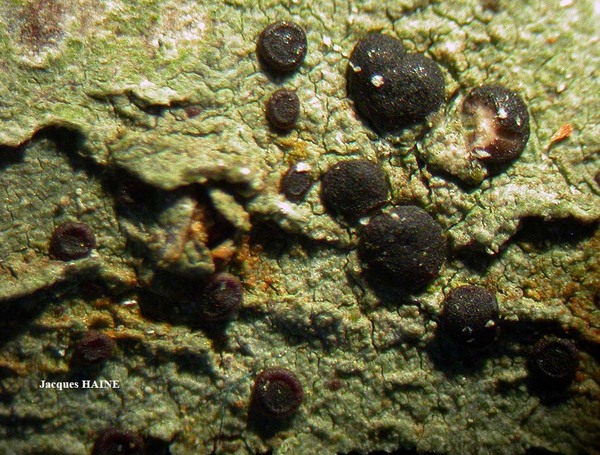
Jacques Haine - Source: http://www.lichensmaritimes.org/index.php?task=fiche&lichen=679&lang=en
France, Vendée
Growth form: Crustose
Substrata: bark
Photobiont: green algae other than Trentepohlia
Reproductive strategy: mainly sexual
Restricted to humid-warm, oceanic areas
Commonnes-rarity: (info)
Alpine belt: absent
Subalpine belt: absent
Oromediterranean belt: absent
Montane belt: absent
Submediterranean belt: absent
Padanian area: absent
Humid submediterranean belt: extremely rare
Humid mediterranean belt: extremely rare
Dry mediterranean belt: absent

Predictive model

Courtesy: Olivier et Danièle Gonnet - Source: https://www.afl-lichenologie.fr/Photos_AFL/Photos_AFL_B/Textes_B2/Bacidia_biatorina.htm
France, Forêt des Touches, alt. 1100 m, sur roche calcaire, Villard-de-Lans - Isère
26/3/2018

Courtesy: Olivier et Danièle Gonnet - Source: https://www.afl-lichenologie.fr/Photos_AFL/Photos_AFL_B/Textes_B2/Bacidia_biatorina.htm
France, Forêt des Touches, alt. 1100 m, sur roche calcaire, Villard-de-Lans - Isère
26/3/2018

Courtesy: Olivier et Danièle Gonnet - Source: https://www.afl-lichenologie.fr/Photos_AFL/Photos_AFL_B/Textes_B2/Bacidia_biatorina.htm
France, Forêt des Touches, alt. 1100 m, sur roche calcaire, Villard-de-Lans - Isère
26/3/2018

Andres Saag - CC BY-SA NC ND
Herbarium: Holotype
Source:http://fungi.myspecies.info/all-fungi/fellhanera-viridisorediata

Courtesy: Olivier et Danièle Gonnet - Source: https://www.afl-lichenologie.fr/Photos_AFL/Photos_AFL_B/Textes_B2/Bacidia_biatorina.htm
France, Forêt des Touches, alt. 1100 m, sur roche calcaire, Villard-de-Lans - Isère
26/3/2018

Courtesy: Olivier et Danièle Gonnet - Source: https://www.afl-lichenologie.fr/Photos_AFL/Photos_AFL_B/Textes_B2/Bacidia_biatorina.htm
France, Forêt des Touches, alt. 1100 m, sur roche calcaire, Villard-de-Lans - Isère
26/3/2018

Courtesy: Olivier et Danièle Gonnet - Source: https://www.afl-lichenologie.fr/Photos_AFL/Photos_AFL_B/Textes_B2/Bacidia_biatorina.htm
France, Forêt des Touches, alt. 1100 m, sur roche calcaire, Villard-de-Lans - Isère
26/3/2018

Courtesy: Olivier et Danièle Gonnet - Source: https://www.afl-lichenologie.fr/Photos_AFL/Photos_AFL_B/Textes_B2/Bacidia_biatorina.htm
France, Forêt des Touches, alt. 1100 m, sur roche calcaire, Villard-de-Lans - Isère
26/3/2018

Patrice Tanchaud - Source: http://www.lichensmaritimes.org/index.php?task=fiche&lichen=679&lang=en
France, Vendée

Patrice Tanchaud - Source: http://www.lichensmaritimes.org/index.php?task=fiche&lichen=679&lang=en
France, Vendée

 Index Fungorum
Index Fungorum
 GBIF
GBIF
